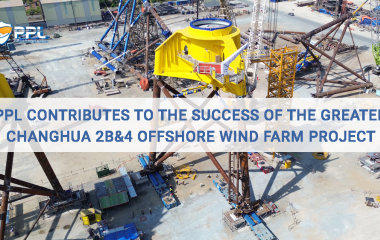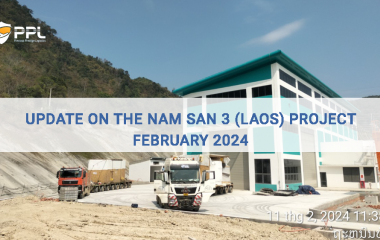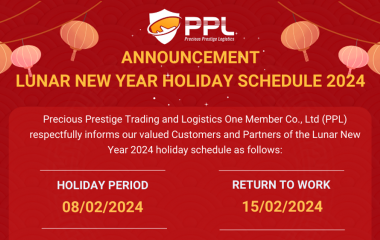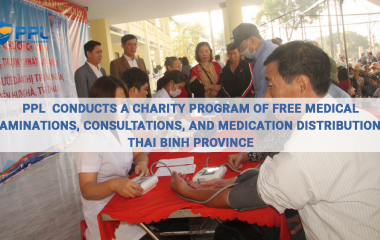Removing logistics bottlenecks in Ho Chi Minh City
As our country's economy is on the rise, logistics plays an important role in the production and circulation of goods. However, the logistics problem of Ho Chi Minh City currently faces many limitations in terms of infrastructure as well as service quality and high costs. This is a big limitation in the competition of enterprises.
Traffic infrastructure - Big difficulty for businesses
When surveying and interviewing a representative of GUNZE (Vietnam) Co., Ltd. at Tan Thuan Export Processing Zone, District 7, the company said: “Every month the company exports and imports 60 containers of goods and raw materials produced through the country. Cat Lai port, Thu Duc city. The road from the factory to the port is only about 15 km, but the logistics cost is up to 5 million VND/container of goods.
 GUNZE (Vietnam) Co., Ltd.
GUNZE (Vietnam) Co., Ltd.
This cost is higher than some other countries in the region such as Thailand, Singapore... from 30 to 40%, increasing production costs and affecting the competitive prices of businesses.
In addition, the logistics infrastructure of Ho Chi Minh City such as: the warehouse system is still limited, the bridges and roads connecting to the ports are sometimes overloaded, which greatly affects businesses, especially the situation of poor people. traffic jam."
Ms. Chiem Phuong Thao, in charge of import and export management of GUNZE (Vietnam) Co., Ltd. added: "Usually, it takes 1 to 2 hours for container trucks to transport goods to or from the factory to the port. but sometimes it takes up to half a day in traffic jams.
This situation causes great damage to businesses because they cannot deliver goods in time and cannot immediately bring raw materials to production lines.
Vietnam's logistics costs are higher than that of other countries in the region. We tried to produce to meet the contract but got stuck in traffic, dropped the container, we had to compensate the contract.
In the opposite direction, the goods from the port to the port are stuck in traffic jams for production materials, and we can't make the whole production line in time, so our workers have to wait and play."
 Vietnam's logistics costs are high
Vietnam's logistics costs are high
The case of GUNZE Co., Ltd. is also the situation that many import-export businesses in Ho Chi Minh City are currently facing.
This is the limitation and bottleneck in the logistics of Ho Chi Minh City that has been recognized by the city leadership. In which, the biggest difficulty is the unsynchronized infrastructure, between roads, railways, waterways and airways.
In addition, so far, logistics services in Ho Chi Minh City are mostly done by private enterprises, without a professional center. Private enterprises only do simple things such as packing and shipping.
Therefore, Vietnam's logistics costs are very high, accounting for 19% of production costs, while developed countries account for less than 10%.
Solution: Promote regional linkages and connect logistics ecosystems
From the reality of the limitations, Ho Chi Minh City has approved the logistics industry development project with the goal of contributing 10% of GRDP by 2025 and 12% by 2030.
The city has planned 7 professional logistics centers, of which 3 centers are concentrated in Thu Duc city, near Long Binh port, Cat Lai port and high-tech park.
Mr. Bui Ta Hoang Vu - Director of Ho Chi Minh City Department of Industry and Trade said: “By 2023, Ho Chi Minh City must complete all procedures for consulting and calling for investment. Along with that, Ho Chi Minh City will promote links with neighboring provinces such as Dong Nai, Binh Duong, Long An, Tay Ninh...
However, Ho Chi Minh City needs many consulting units to best implement the operation of logistics centers.”
Mr. Bui Ta Hoang Vu said: "We are determined to form professional logistics centers, to invest in digital transformation, to invest in human resources, to invest in advertising and promotion... Linking regions for translation services. Logistics services in Ho Chi Minh City make an important contribution, becoming the lifeblood of the economy from production, circulation, import and export of goods.”
Currently, the system of port clusters in Thu Duc city accounts for 45% of the cargo clearance capacity of the southern provinces. In order to solve the cargo congestion in these port clusters, Thu Duc is proposing to build a connection route to the ports.
Mr. Hoang Tung, Chairman of Thu Duc City People's Committee said: "Thu Duc city is planning to 2040, in which the important content is the proposal to connect road and rail traffic between the Cat Cat port cluster and the railway station. Lai - Phu Huu with the national road and rail transport system.
In the short term, Thu Duc focuses on proposing to build a traffic road directly connecting with Cat Lai - Phu Huu port with ring road 3 and Long Thanh - Dau Giay expressway.
Mr. Hoang Tung added: "We really hope that the road connecting to Ring Road 3 from this port cluster will be completed at the same time and this connection is very important in solving traffic congestion."
In order to cut logistics costs, Ho Chi Minh City Customs Department recommends that specialized management activities will be combined with goods inspection to form a closed circle. According to the Ho Chi Minh City Logistics Association, businesses should link together to effectively use the warehouse system, vehicles, technology platforms ... in this ecosystem to increase efficiency.
Ms. Dang Minh Phuong, President of Ho Chi Minh City Logistics Association said: “When connecting through the logistics ecosystem, especially in Ho Chi Minh City, it is possible to connect nationwide. Businesses in Ho Chi Minh City can connect with domestic and foreign businesses, then it will certainly reduce logistics costs.
To do this, one business cannot do it, but it needs the cooperation of all businesses, not only of logistics enterprises but also of import-export businesses, businesses in the logistics ecosystem can connect together. together, operate and use the same systems, means of transport, warehouses, electronic technology platform infrastructures…”
In addition to accelerating the completion of infrastructure, connecting traffic with the port system, cutting logistics costs is something that businesses are especially interested in. Solving these bottlenecks will contribute to improving the competitiveness of domestic goods.
According to VOV
Related Posts
New Posts
- Vietnam Holiday Announcement
- PPL contributes to the success of the Greater Changhua 2b&4 Offshore Wind Farm Project
- Update on the Nam San 3 (Laos) Project February 2024
- PPL HAPPY NEW YEAR 2024
- LUNA NEW YEAR HOLIDAY 2024 ANNOUNCEMENT
- PPL CONDUCTS A CHARITY PROGRAM OF FREE MEDICAL EXAMINATIONS, CONSULTATIONS, AND MEDICATION DISTRIBUTION IN THAI BINH PROVINCE







Comments